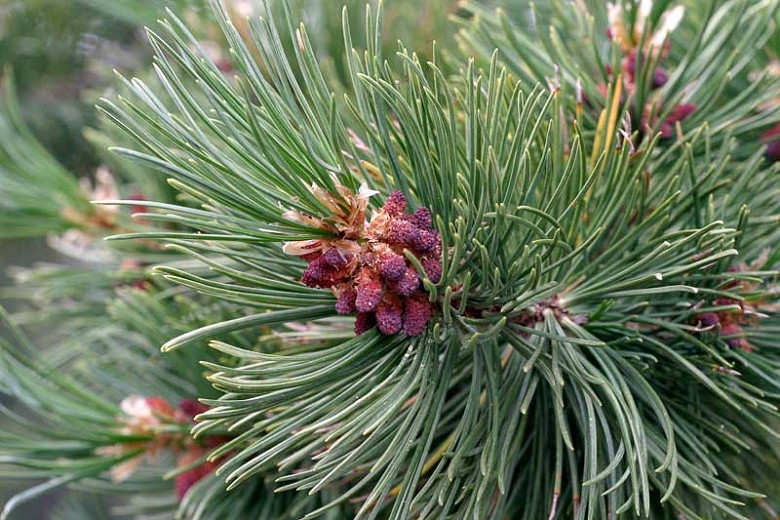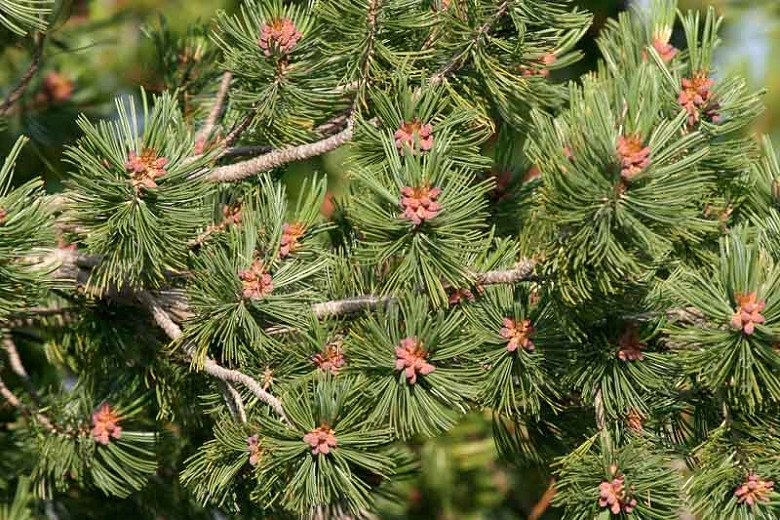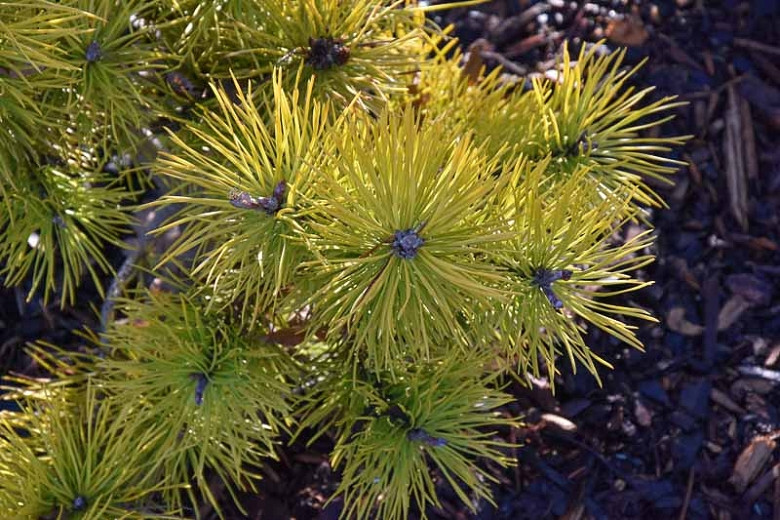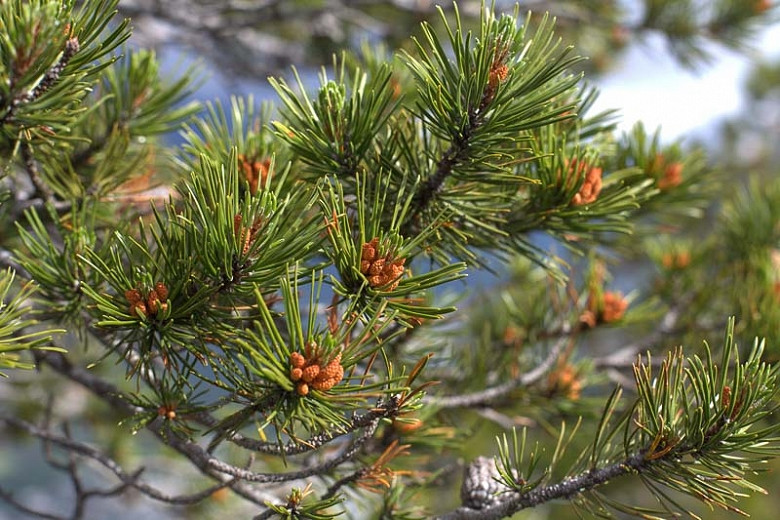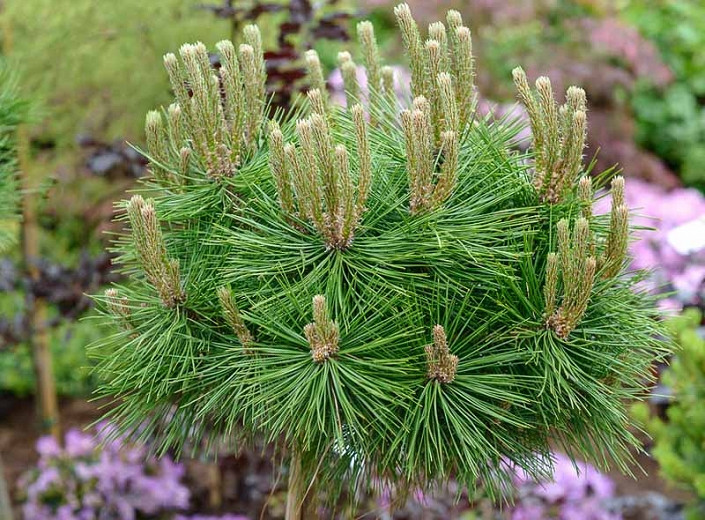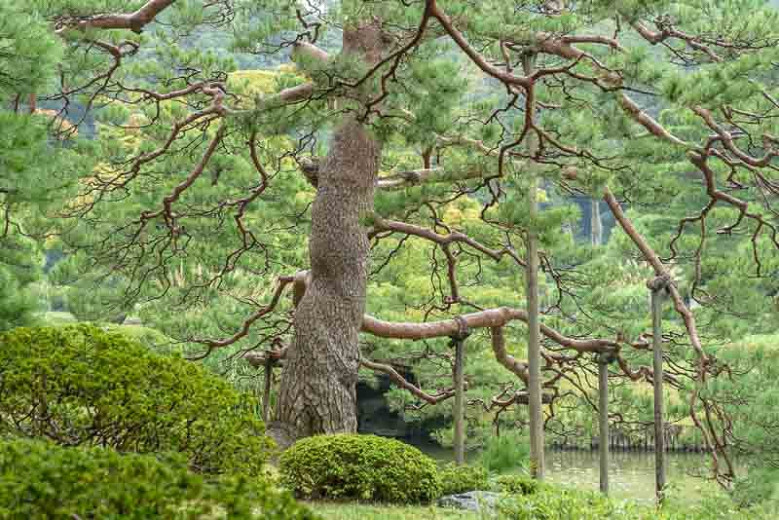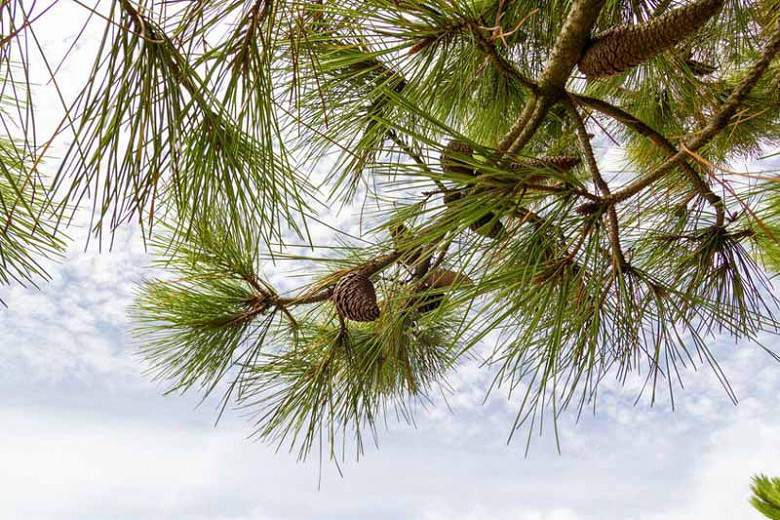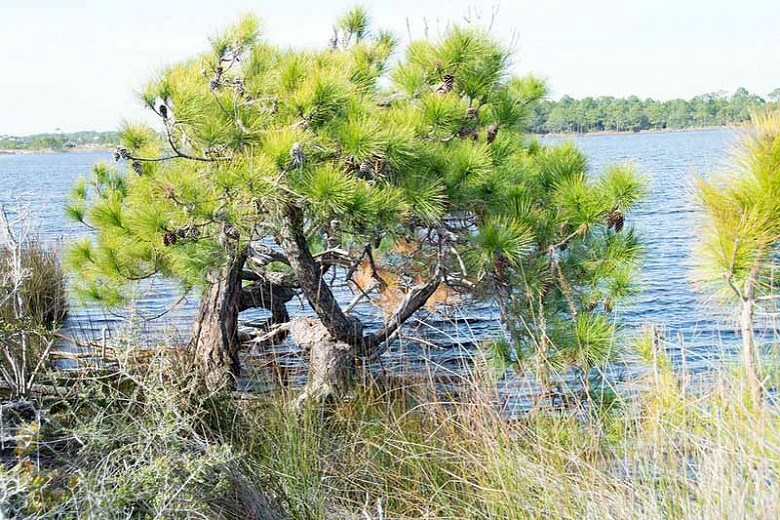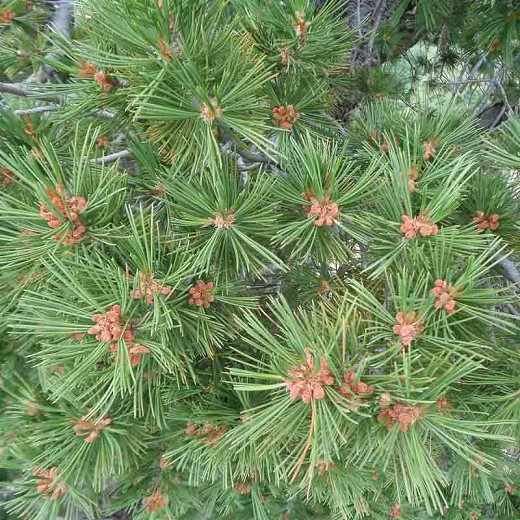Pinus albicaulis (Whitebark Pine)
Slow-growing, Pinus albicaulis (Whitebark Pine) is a medium to tall evergreen conifer adorned with an irregular sprawling crown and spreading to ascending branches. The trunk can be straight or contorted and twisted by the wind and harsh growing conditions. The sweet smelling foliage of upcurved, dark yellow-green needles, up to 3 in. long (8 cm), is presented in small bouquets of 5 at the ends of the twigs. The egg-shaped, deep red to purple female cones, up to 3 in. long (8 cm), are mostly found at the top of upswept branches. They remain on the tree indefinitely unless dislodged by animals. They do not open naturally but only through animal interference. The seeds are dispersed almost exclusively by Clark’s nutcrackers, a jay-like bird. They are an important food for grizzly bears and other wildlife of the high mountains. The bark is smooth and gray-white in youth, becoming scaly with age. Extremely long-lived (up to a thousand years), Whitebark Pine tolerates strong, desiccating winds. A very picturesque pine that makes a terrific specimen tree and thrives at sites with harsh climates, where few or no other trees survive. Good for rock gardens or as a bonsai plant.
- Grows up to 20-40 ft. tall (6-12 m) and 10-20 ft. wide (3-6 m).
- Performs best in full sun in acidic, well-drained soils. Drought tolerant. Whitebark pine grows in a cold, windy, snowy, and generally moist climatic zone.
- No pruning required.
- Keep an eye out for white pine blister rust and mountain pine beetle.
- Native to western North America, from northern British Columbia to southern California.
Requirements
| Hardiness | 2 – 8 |
|---|---|
| Climate Zones | 1, 1A, 1B, 2, 2A, 2B, 3, 3A, 3B, 4, 5, 6, 7, 15, 16, 17, A2, A3 |
| Plant Type | Conifers, Trees |
| Plant Family | Pinus – Pines |
| Exposure | Full Sun |
| Season of Interest | Spring (Early,Mid,Late)Summer (Early,Mid,Late)FallWinter |
| Height | 20' – 40' (6m – 12m) |
| Spread | 10' – 20' (3m – 6m) |
| Water Needs | Average |
| Maintenance | Low |
| Soil Type | Loam, Sand |
| Soil pH | Acid, Neutral |
| Soil Drainage | Well-Drained |
| Characteristics | Showy, Evergreen, Fruit & Berries |
| Native Plants | United States, California, Pacific Northwest, Idaho, Oregon, Washington, Rocky Mountains, Montana, Wyoming, Southwest, Nevada |
| Tolerance | Drought |
| Garden Styles | Prairie and Meadow |
